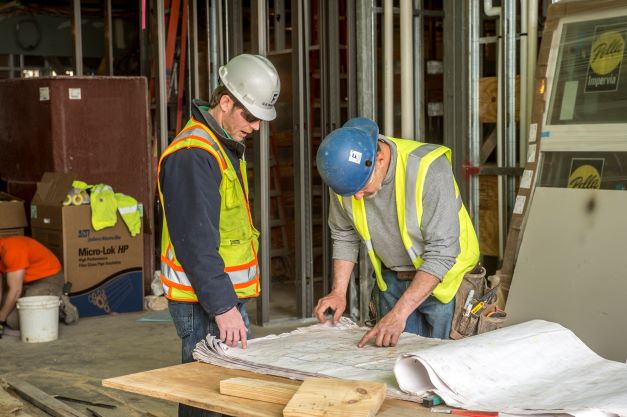- Who We Are
-
Our Work
- Educational
- Senior Living
- Hospitality
-
Healthcare
- Partners Urgent Care
- Yale New Haven Health- Medical Office Building
- The Hospital of Central Connecticut - Advanced Wound and Hyperbaric Medicine Center
- Connecticut Children's - Infusion Center and Gastrointestinal Clinic
- Connecticut Children's - Specialty Care Center
- MidState Medical Center- Post-Anesthesia Care Unit Expansion & Renovation
- Commercial
- Specialty Work
- How We Do It
- Our Blog
- Industry Tidbits
- Join Our Family
- Contact Us
Quality Control in Construction: Conducting Field Inspections (Part 5 of 5)
May 12th, 2015
We’ve talked a lot about quality control in previous blog posts. It’s kind of a big deal to us, and if you’ve hired us to work on your building project, it must be to you too. We have one more topic to cover on the process: conducting field inspections during and after the installation of the work. This cuts down on punchlist work and minimizes callbacks after the work is complete.

Progress Inspections
Progress inspections happen on a daily basis during the superintendent’s site walks and during regular subcontractor communication and coordination. During these inspections, the focus is on ensuring that the approved materials are being installed, confirming materials are installed using the manufacturer’s recommendations and good practice, and confirming proper environment and weather requirements are followed.
A few examples of things we do include:
- Making sure millwork gets acclimated to its environment before it’s installed
- Measuring rough-framed openings for doors, windows and pass-thrus to make sure they’re the right size
- Following floor-specific checklists to make sure everything is there and correct prior to the next operation
- Opening and closing all windows and tilting them in and out, when applicable, to make sure they operate correctly prior to drywall install
Nobody is perfect, so inspecting the work while it’s ongoing allows us to find and correct deficiencies before the schedule and subsequent work are impacted.
Final Inspections and Sign Offs
Final inspections and sign offs are also required. In many cases, work requiring a final sign off is waiting to be covered up by another system or finish material. It’s important to confirm the work meets the quality requirements set forth in the contract documents by holding a final installation inspection. The superintendent, subcontractor and/or installer, Manufacturer’s Representative and possibly a third party inspection agency should attend the final inspection.
Bedford Falls Case Study
Prior to the state licensure inspection at Bedford Falls, a new 75,000 sf Benchmark Senior Living community, the CEF Superintendent tested all fire-rated doors and all 84 unit doors to make sure they were self-closing and self-latching as required by code type. He had adjustments made as needed. After the licensure inspection, the State Inspector said it was the first inspection she had ever done where every door passed on the first try. The superintendent knew the doors were a key point in the licensure inspection and made sure they were all closing and latching properly.
Summary
Like the other quality control topics we’ve covered in previous blog posts, spending time on inspecting our work initially saves both time and money in the long run. Shorter punchlists and fewer callbacks make conducting inspections of in-progress work and completed work a no-brainer.
Contact us to see how we can help you on your building project.
Check out our other articles in this series:
Quality Control in Construction: An Overview (Part 1 of 5)
Quality Control in Construction: Submittal Review Process (Part 2 of 5)
Quality Control in Construction: 4 Reasons to Create Mock Ups (Part 3 of 5)









